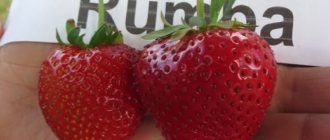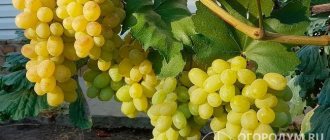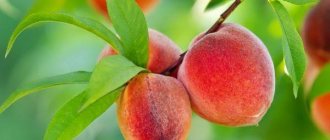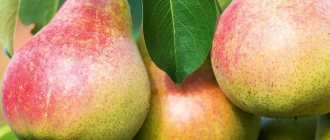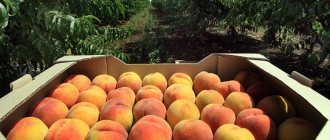The strawberry variety "Sonata" was developed in Holland in 1990. Its predecessors - Elsanta and Polka - at one time acquired a well-deserved reputation among amateur gardeners and owners of industrial strawberry plantings as reliable, high-yielding varieties.
The hybrid, having combined the properties of its predecessors, has acquired new characteristics that allow it to remain relevant for three decades. The copyright holders, the Fresh Forward company, relied on the endurance of the new plant, and they succeeded.
Characteristic
The strawberry variety Sonata has a famous family: Elsanta and Polka. Having inherited large fruit and productivity, the variety is distinguished by its good ability to adapt to different weather conditions and resistance to a group of diseases. Abundant fruiting is also observed in dry times, along with the persistence of the plant in winter in a continental climate. The flowers are not afraid of return frosts; low peduncles are hidden among the foliage. Mid-early strawberries of the Sonata variety are chosen for cultivation due to the long harvest period, which begins in mid-June, and the yield - up to 1.0-1.5 kg per bush.
The abundant fruiting of the plant is due to its friendly flowering. A large amount of pollen is created and many ovaries are formed. According to reviews, the berries of the Sonata strawberry variety are uniform and attractive, which ensures their success among buyers. Marketability is inherent in 70% of the crop. The good quality of the berries is maintained even in the rain. Dense, dry fruits are less susceptible to cracking. The most abundant harvest of berries of this variety is in the second half of June, but the formed ovaries will ripen in July. On average, the berries ripen within 40-50 days.
Strawberry Sonata, according to the description of the variety and reviews, is popular in large farms and on the plots of amateur gardeners. Excellent results from growing early produce are obtained in closed ground conditions. The variety is planted in garden beds and in regions with short, cool summers, covering the plants for the winter. Sonata variety bushes grow in one area for 5 years, maintaining the volume of the harvest. Due to its bright tasting qualities, Sonata strawberries are best consumed fresh. Excess berries are frozen or made into compotes and jams.
Attention! Strawberry Sonata is resistant to pathogens of many diseases. But when planting bushes on heavy soils, without sufficient drainage, the roots can be damaged by infections.
History of selection
The botanical name of the plant is Garden Strawberry (Pineapple) (Fragaria × ananassa Duch). Variety name: San Andreas. Obtained as a result of crossing the Albion variety and the Cal 97.86-1 form in the experimental garden of the University of California in 2001. Propagated by tendrils.
The variety is remontant and belongs to the evergreen category. It is similar to Diamond, but has higher yields, high-quality shelf-life fruits and disease resistance. Designed for cultivation in the subtropical zone, therefore in temperate climates it can only grow in greenhouses.
The variety has been fully certified for cultivation in the USA and Canada since 2009. Variety tests were carried out in 2005. San Andreas is actively sold on the European berry market. In the CIS it is registered in the State Register of Belarus.
Did you know? Strawberry
-
the only fruit whose seeds are on the outside.
One berry carries
about 200 seeds.
But, nevertheless, these seeds are sterile and the plant reproduces vegetatively (in its own parts). It shows good yield in the climate of this country, including in open ground. San Andreas is not included in the State Register of Russia, but is widely used by gardeners. The high yield and commercial properties of the berries make it extremely popular. The variety produces 99% class I berries.
Advantages and disadvantages of the variety
Judging by the description of the variety, photos and reviews from gardeners, the popularity of the Sonata strawberry is deserved by its obvious advantages.
- Excellent taste properties and abundant long-term fruiting;
- High commercial performance;
- Adaptation of plants in different climatic conditions;
- Strawberry resistance to gray rot and powdery mildew.
Among the negative characteristics of the Sonata variety are the following:
- Slow separation of berries from sepals due to the absence of a neck;
- A small number of mustaches on the bush;
- Susceptibility to verticillium;
- Possibility of damage to roots due to high humidity;
- The need for a long period of winter dormancy;
- Mandatory fertilizing.
Comparing the points, we can conclude that Sonata variety strawberries are quite worthy of occupying their niche in garden beds and greenhouses. Most deficiencies are compensated for by careful care and pale before a bountiful harvest.
Sonata breeding rules
Strawberry Sonata propagation is carried out:
- seeds;
- dividing the bush into parts;
- antennae.
When the bushes grow, few tendrils are formed on them, which is why the appropriate propagation method is used infrequently. The most commonly used method is dividing the bush into parts. It is implemented using the following algorithm:
- Digging up an adult plant.
- Careful separation of rhizomes.
- Place the rhizomes of each part in the rooter.
- Planting strawberries.
Description
Sonata strawberry bushes are compact, sparsely leafy, and form a few tendrils. The peduncles are strong, support large berries, but are not tall, covered with dark green wrinkled leaves or protrude somewhat above the bush. Flowering is friendly. The anthers are large and distribute a lot of pollen, which ensures abundant ovaries.
The Sonata strawberry variety is known for the dessert-sweet taste of the berries with a slight pleasant sourness and captivating aroma. The berries have a regular wide-conical shape, a rich red color, and are evenly colored when ripe. The surface of the fruit is shiny, the flesh is dense, but tender and juicy. The weight of the berries is 30-50 g, the diameter of the fruit is 3.5 cm. The seeds are not on the surface,
Interesting! Sonata variety berries are a dessert dietary product. 100 g of strawberries contain only 30 kcal.
Reviews
- Stepan, a novice gardener: “I am very pleased with this variety of berries - the harvest is large, the taste of the berries is pleasant, aromatic and sweet, they are easy to transport home without changing their shape. The first bushes took root well on the site, almost all of them, however, 2-3 berry bushes had to be discarded due to small foliage and poor growth.”
- Svetlana, summer resident: “I borrowed the variety from my friend; she bought it at an agricultural exhibition 2 years ago. She really likes it because of the abundance of the harvest. I also adhere to this opinion - the berries are medium-sized, but there are a lot of them on each bush, more than my old strawberries. I have prepared compotes and jam for the winter, so in winter we will remember the warm summer.”
Growing
Sonata strawberries should be planted on fertile soil prepared six months in advance. The soil is enriched with humus or compost, potassium fertilizers and superphosphate are added, according to the instructions. Much attention should be paid to strawberry seedlings of the Sonata variety.
- High quality strawberry seedlings have a strong horn, up to 8 mm thick;
- The plant has at least 4-5 healthy-looking leaves: elastic, evenly colored, without spots or plaque;
- The roots are dense, 7-10 cm long;
- The leaves and roots of the seedling are fresh, not withered.
Seedling
In trade there are seedlings of Sonata strawberries that have undergone freezing treatment. Frigo seedlings are of high quality, technological operations of selection and sorting are carried out automatically and manually. Plants with generative buds are selected that meet the specified requirements for the variety. They are dug out already formed, in late autumn. They are treated with broad-spectrum fungicides and stored at a temperature of -1.8 0C for up to 9 months.
- Purchased frigo seedlings are slowly defrosted;
- Cut off the tips of the roots and place in water for 6-10 hours;
- Before planting, the roots can be treated with a fungicide. The drug is dissolved in water and mixed with clay mash. Clay helps keep the product near the roots.
- Planted strawberry plants are watered abundantly. They take root quickly because the seedlings do not have leaves;
- After a week, the leaves grow, and after 10-12 days the first feeding is carried out.
Advice! To plant the Sonata variety, you need to choose high-quality seedlings that can produce a harvest next summer.
Landing rules
For good harvest quality, Sonata strawberries must be planted in an area that meets the requirements in the description of the variety.
- For the Sonata variety, the best soil is fertile, slightly acidic. Grows well in sandy areas where it is carefully fertilized;
- Choose a sunny area, without drafts;
- Hills are more suitable for planting Sonata strawberries. Low-lying areas are dangerous for the plant due to the close groundwater level, which can lead to rotting of the roots;
- Avoid planting the Sonata variety on heavy, clay soils. In extreme cases, be sure to provide good drainage and dilute the soil with coarse sand or arrange ridges;
- The area is thoroughly cleared of weeds and their long roots.
Strawberries Sonata are planted in spring or July. Planting in August is contraindicated, because the plants do not adapt and will enter the winter weakened.
- The holes are made 25-30 cm apart, the depth corresponds to the length of the strawberry roots;
- The roots are carefully held suspended while they are covered with soil;
- The socket must protrude above the ground;
- After planting, water the soil abundantly.
Comment! The best predecessors for strawberries are legumes, forage grasses and green crops.
Care
For the good development of strawberry bushes of the Sonata variety, several basic requirements must be met.
- Carefully weed the weeds to avoid the proliferation of pests and fungal diseases;
- After planting, the plants are watered abundantly. If strawberries were planted in the fall, watering is stopped only in October;
- During the dry period, each Sonata strawberry bush will use at least 1 liter of water;
- If there is no rain, watering is required during flowering and ovary formation;
- Leave mustaches for seedlings only from three-year-old Sonata bushes;
- At the end of September, the beds are covered with straw for the winter, and thick agrotex is stretched over dry branches.
Feeding
Strawberries of the Sonata variety must be fertilized periodically, properly maintaining the balance of microelements. 1 liter of nutrient solution is poured under each bush.
- The composition of fertilizers should include magnesium, manganese, iron;
- In spring, nitrogen fertilizers are used. Before flowering, 50 g of azofoska is dissolved in 10 liters of chilled boiled water;
- Use soil and foliar feeding with special means: “Sudarushka”, “Ryazanochka” in accordance with the instructions.
Garden strawberries
Today we will talk about a culture that is very popular, grown in almost every area, and at the same time lives under someone else’s name. This is strawberry. I can’t even dare to call this berry anything else. But for the sake of truth, this must be done. We don't grow real strawberries in our country. That bright red berry that is cultivated in our gardens is called garden strawberry or in Latin Fragaria ananassa - pineapple strawberry. Strawberry is not a colloquial name, but simply incorrect - this is the name of another very similar plant of the same genus, which is not cultivated or found in Russia. Real strawberry bushes are thicker, but the berries, on the contrary, are smaller in size. Growing strawberries is not as simple as it might seem at first glance. But after reading this article to the end, you can claim a good harvest of this juicy and aromatic berry.
It is cultivated only in Western Europe, but it is not very widespread. The place of strawberries in the minds and hearts of our people has been firmly occupied by garden strawberries, which are called strawberries everywhere - in cooking, in literature, and even in lists of food ingredients.
For example, it is impossible to find yogurt with garden strawberries on store shelves. Although they add this particular berry there. Therefore, we will follow the tradition and further in the article will call this berry strawberry.
Plant protection
Effective prevention of fungal diseases is the removal of autumn mulch from the beds in the spring, removal of weeds, and moderate planting density. In August, the leaves of the Sonata strawberry bushes need to be trimmed.
- In case of infection with verticillium, the bushes are sprayed with Fundazol, Benorado;
- Bayleton, Teldor, Fundazol and other fungicides help fight gray mold.
High-yielding berry picking is possible if agricultural practices are followed. The gardener should take care to get full fruiting.

